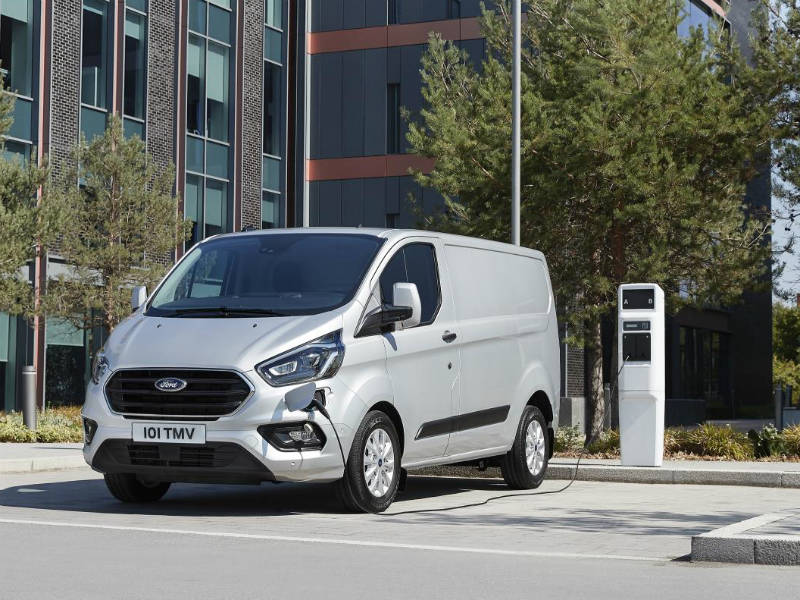YOU might have seen the Ford Transit Custom PHEV already – at the CV Show for the last two years.
However, that was a prototype for evaluation purposes; now Ford has gone a step further and confirmed a full production model. And shown it at the Hannover Show, Germany, September 2018.
The new Ford Transit Custom PHEV will be ideal for those firms and traders working in urban areas.
It can travel up to 30 miles in zero emission mode; after that it can work as a range extender for up to 300 miles using a 1.0-litre turbo petrol engine.
Drive is to the front wheels. And drive will always be delivered by the battery. The petrol engine acts as a generator to top up the battery before full battery recharging is required.
Ian Porter, Chief Programme Engineer, Transit Custom, Ford of Europe, said:
“The Transit Custom PHEV re-writes the rule book for a general purpose 1-tonne van, providing a versatile performer with zero-emission capability. It offers the same load capacity as a diesel van, and the freedom to complete long-distance journeys without the need to stop for a charge.”
Give me the low-down on the high-tech Transit Custom PHEV
The van uses a series-hybrid driveline configuration.
This means the front wheels are driven exclusively by an electric motor, rather than by the combustion engine. Power for the motor is from a 14 kWh liquid-cooled lithium-ion battery pack.
The battery is located under the load floor, without compromising cargo volume. Payload exceeds 1,000kg. Ford’s compact 1.0-litre EcoBoost engine generates additional charge for the batteries when required.
So how can I choose to drive in zero emission mode?
The Ford Transit PHEV has three settings for its motor:
- EV Auto – default setting determines how to use the energy sources
- EV Now – uses only electric power until the battery is depleted
- EV Later – system aims to maintain current level of battery charge
The battery can be recharged using the charge port located within the front bumper. Battery recharging takes between three to five hours depending on the charger.
Inside the cabin, a power/charge gauge replaces the standard rev counter, and a smaller gauge for battery state of charge replaces the engine coolant temperature indicator.
Trip computer functions are configured specifically for the PHEV powertrain, and EV mode indicators, maintenance alerts, and a warning when the vehicle is plugged into a charging point, appear on the instrument display cluster. A status line showing distance to empty for both the battery and range extender is visible on all screen displays.
Ford says it is the first volume manufacturer to offer PHEV technology in this segment of the van market. The Transit Custom PHEV is part of the company’s big electrification push underpinned by an $11 billion investment.
Ford plans to have 40 electrified vehicles globally by 2022. Of these 16 will be fully electric vehicles.









Leave A Comment